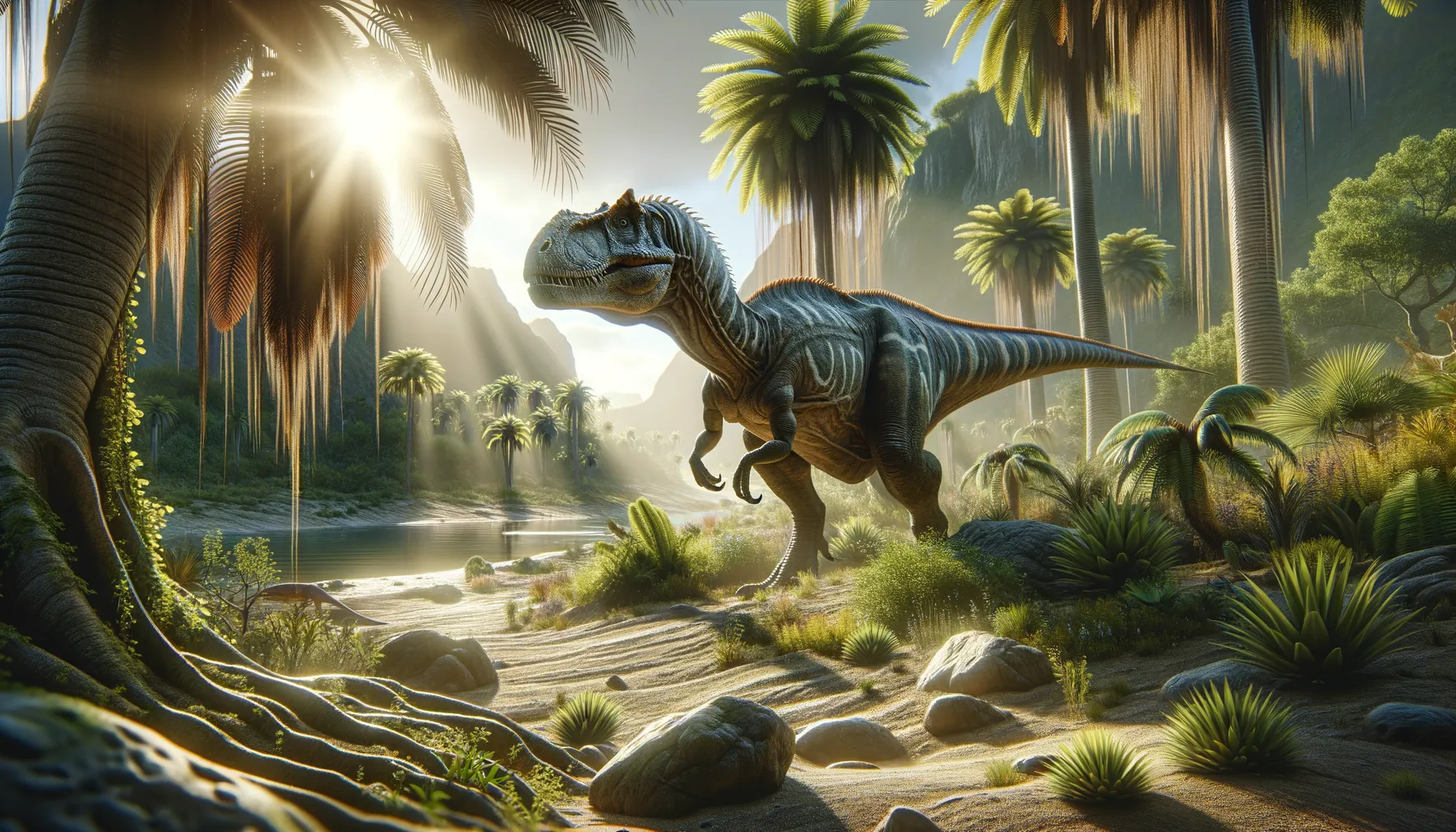
Magnamanus
Mighty arms of ancient Europe.
Period
Cretaceous
Length
Measured around 20 feet long.
Height
Stood about 9 feet tall.
Weight
Weighed roughly 3 tons.
Magnamanus was a herbivorous dinosaur from the Cretaceous Period, known for its moderate size and distinctive arm morphology. It roamed ancient Europe, navigating a world filled with diverse plant life. Its discovery in Northern Spain provided crucial insights into the evolution of certain dinosaur groups, illustrating a fascinating transition in limb structure. As a herbivore, it contributed to the ecosystem by influencing plant dynamics.
Diet
Magnamanus primarily consumed plants, thanks to its herbivorous diet. It likely feasted on ferns, cycads, and other low-lying vegetation available during its era.
Hunting
As a herbivore, it did not engage in hunting. Instead, it might have browsed in groups to avoid predators, using its size as a deterrent.
Environmental challenges
Magnamanus faced environmental challenges such as changing climates and evolving predators. Shifting temperatures could intermittently affect food availability. Additionally, predator-prey dynamics would require vigilance to avoid becoming a target for carnivorous dinosaurs.
Speed
Moderate pace, not a swift creature.
Lifespan
Lived around 70 to 100 years.
First discovery
Discovered in 2011 in Spain.
Fun Facts
- Magnamanus is a dinosaur that lived during the early Cretaceous period, around 130 million years ago.
- Its name means 'great hand', highlighting the distinctive, large hands this dinosaur possessed.
- Magnamanus was a herbivore, meaning it primarily ate plants and vegetation.
- The fossils of Magnamanus were first discovered in Spain, providing insight into Europe's dinosaur populations.
- Magnamanus is thought to have been a relatively large dinosaur, reaching lengths of up to 25 feet (about 7.5 meters).
- It was part of the iguanodont group of dinosaurs, which are known for their distinctive thumb spikes.
- Paleontologists believe Magnamanus had strong limbs, which may have been used for foraging or defense.
Growth and Development
Magnamanus grew through a series of life stages, reaching maturity at a relatively slow pace due to its size. Its development included growing stronger limbs to support its weight and reach vegetation. Juveniles likely gathered in herds for protection as they matured.
Habitat
Magnamanus inhabited lush, forested environments rich in vegetation. Its preferred habitats offered ample food and cover from predators. Water sources were essential, as these would support the plants it depended on for sustenance.
Interaction with other species
Magnamanus interacted with both herbivores and carnivores within its ecosystem. It may have formed groups with other herbivores for grazing. Predatory threats would encourage a closer, protective grouping.
Natural lifespan
It naturally lived up to 100 years.
Reproduction
Reproduction involved laying clutches of eggs, with nests carefully prepared to maximize survival rates. Parenting likely included protecting the nest from predators and environmental threats. Hatched juveniles gathered in groups for added protection.
Social behaviour
Magnamanus probably exhibited social behavior, gathering in herds for protection against predators. Such group dynamics could improve individual survival chances. Communication might include vocalizations and physical signals for coordination.
Fossil locations
Fossil remains of Magnamanus are predominantly found in Northern Spain. These fossils have provided substantial evidence for studying its biomechanics and ecological role. Their discovery has contributed significantly to understanding the diversity of European dinosaurs during the Cretaceous period.
